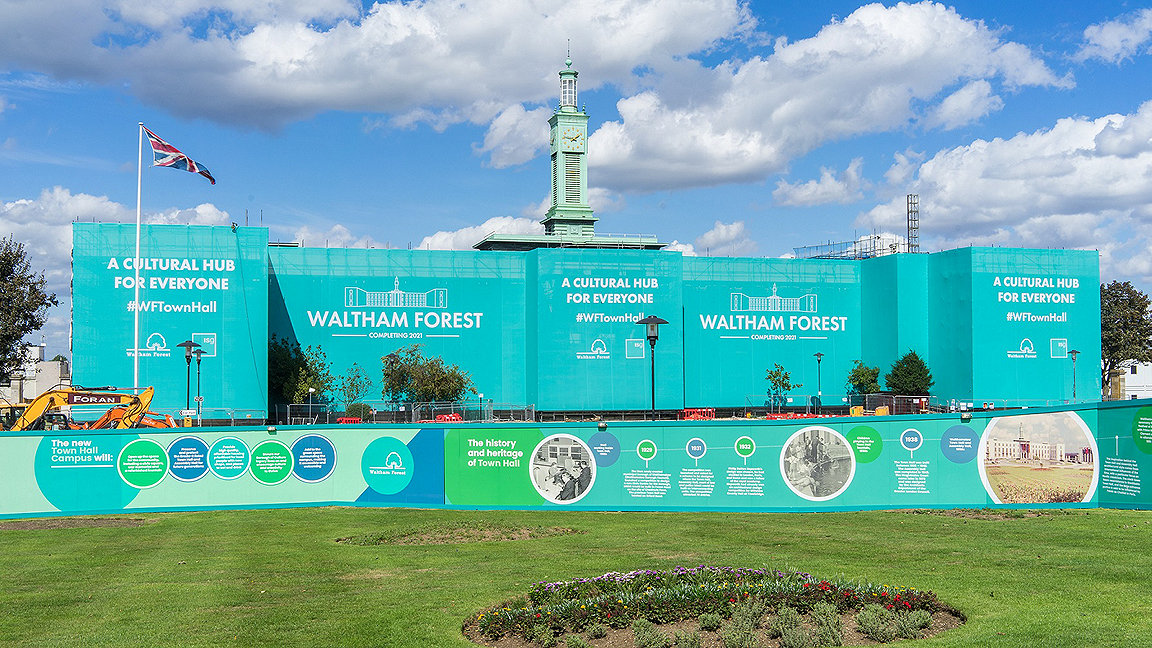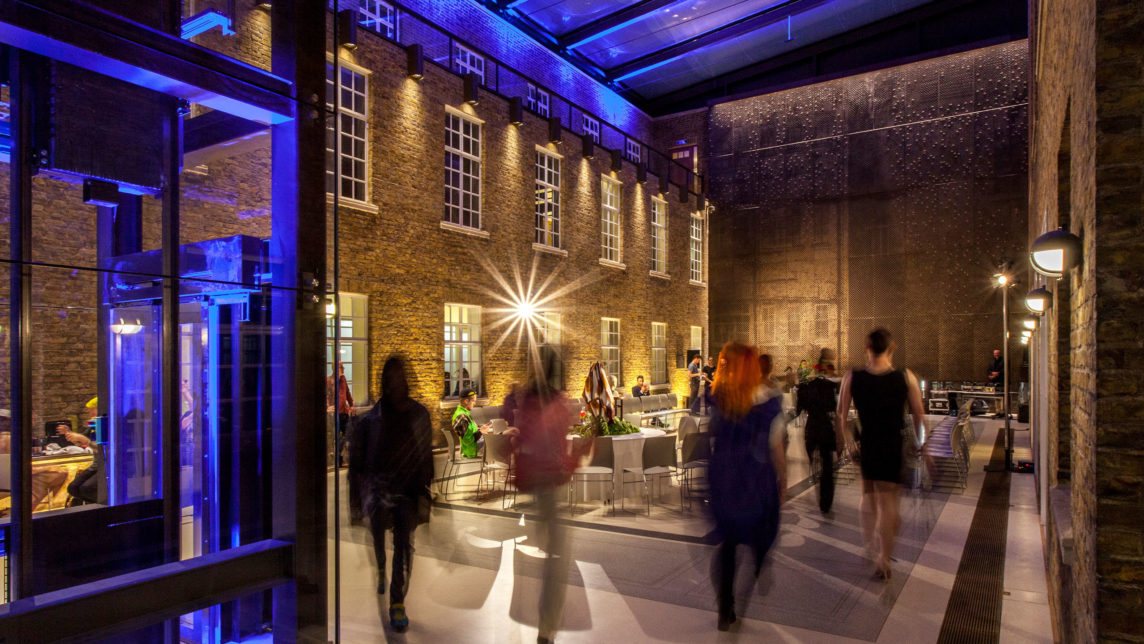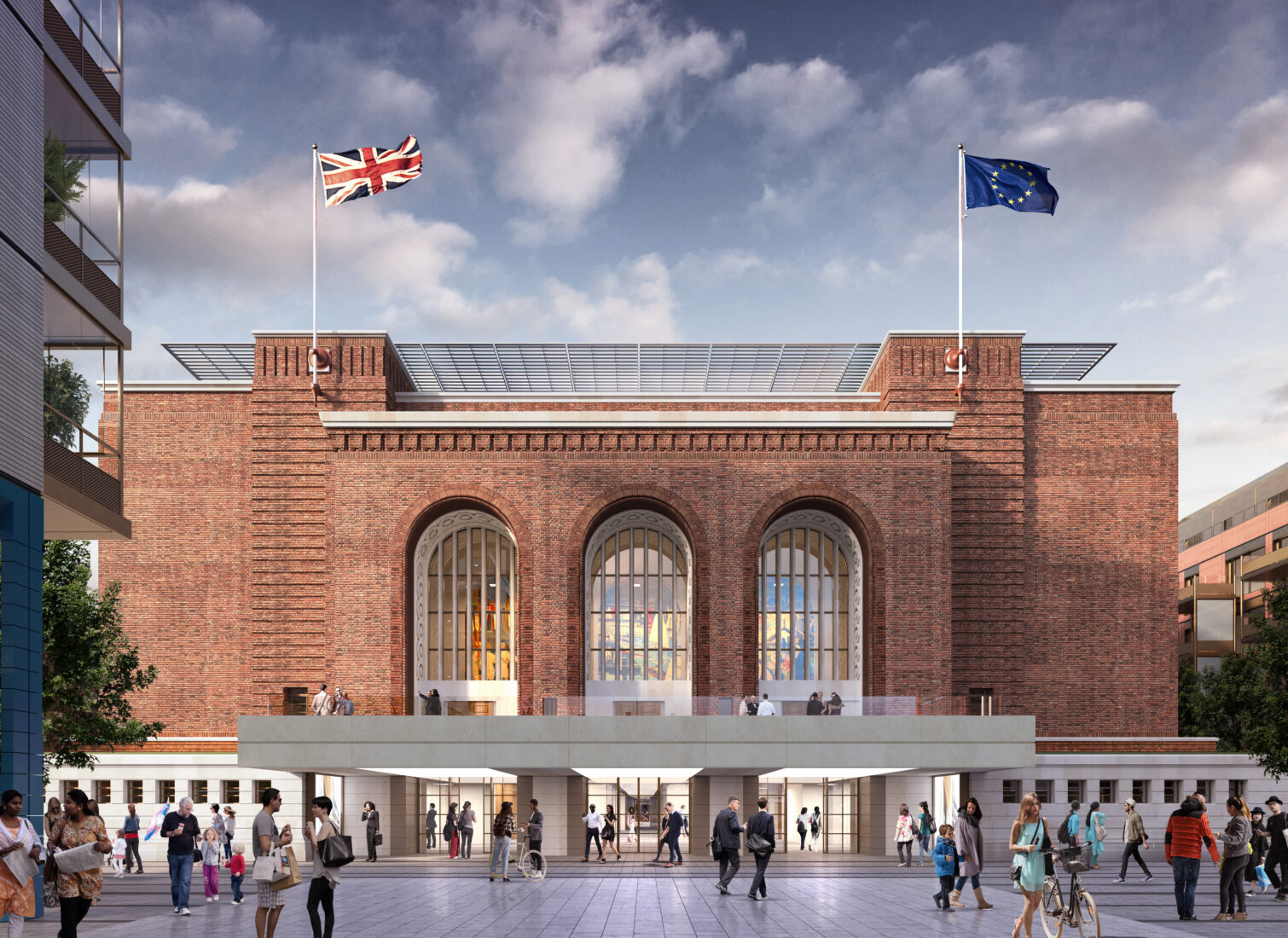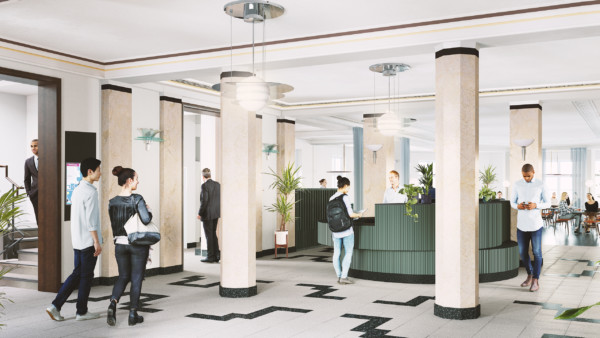
Waltham Forest Town Hall under redevelopment
When Herbert William Butler addressed residents as mayor of Hackney at the opening of the new town hall in July 1937, he expressed the hope that 'citizens would look with pride and pleasure upon that great dignified centre of civic life.'
Envisaged as symbols of local communities' power, town halls are typically located strategically in town centres and often housed in listed buildings, making them among the UK's highest-profile public assets. But does their role and function evolve together with the needs of the communities they serve? And how can these buildings remain relevant, enabling local growth and supporting efficient civic estates?
Many local authorities have started to rethink the role of town halls while also addressing their physical disrepair. Numerous initiatives have been launched to restore and adapt these heritage assets; but also, importantly, to challenge outdated perceptions about their purpose.
Rationalisation and recovery
Rethinking town halls had begun in response to economic, social and spatial challenges and opportunities long before COVID-19. However, the pandemic has emphasised the need to realign town halls' purpose, forms and functions with community needs in the long run.
One of the catalysts is a growing need for estate rationalisation. Rethinking town halls can help lower costs and create better offices and civic function space. Although there are examples of town hall sites being sold to developers on long leases, as at Hornsey in north London, retaining civic uses allows these beautiful spaces to continue telling their story to the next generation of communities. As Historic England's senior development surveyor Verity Ramsden puts it: 'The historic significance of these buildings lies in their civic purpose and public-facing uses. Good schemes appreciate this significance and retain it.'
Another factor is that town hall redevelopment acts as a powerful catalyst for town centre recovery. Challenged by the government to find new sources of income, local authorities invest in homes and development to stimulate regeneration, and also in portfolios to generate yield for reinvestment in the local economy and services. For example, according to a Public Accounts Committee report, Local authority investment in commercial property for 2019-2021, councils spent £6.6bn on commercial investment between 2006 and 2019 and a further £1bn in the first half of 2019-20.
'Historic town halls and high streets should be strategically integrated into holistic regeneration plans for civic centres,' maintains Ramsden. Historic England is for instance regenerating 68 historic high streets across England as part of the £95m government-funded High Street Heritage Action Zones programme, in collaboration with local people and partners. Repair grants and capacity building grants are among the potential programme implementation mechanisms available from them.
A 'ruthlessly inclusive' strategy
Establishing a shared vision for project outcomes and how to achieve them, as well as continuous stakeholder and community engagement, are key to ensuring that historic places are preserved, maintained and loved by future generations.
Historic England is one such stakeholder. The public body cites the renovation of the grade II listed Hackney Town Hall as a successful example of bringing a strong conservation team on board early, to ensure the building's historic and community significance were safeguarded.

A meaningful community engagement strategy is another prerequisite for successful civic campus remodelling. 'Town halls play a unique role as a physical manifestation of the purpose and values of the communities they serve,' says CBRE's UK Strategic Advisory director Tina Ivanova. 'One of the key questions that councils should be asking is what is the future purpose of these assets, noting the significant transformation society as a whole is going through.'
The London Borough of Hammersmith and Fulham pioneered partnership with local amenity groups in preparing a new design for the grade II listed town hall site, taking citizens' perspective on board. Engagement with the local, user-led Disabled People's Commission and an independent Town Hall Commission made the scheme 'ruthlessly inclusive', to quote Ivan Harbour, design partner at Rogers Stirk Harbour + Partners, which was responsible for the redesign.
"A meaningful community engagement strategy is another prerequisite for successful civic campus remodelling"
Renewed relevance
'The best thing for historic town halls is to keep them in use,' says Ramsden. 'Finding a long-term, viable and sustainable use for a building keeps it relevant, which ensures it is maintained and is producing enough income.'
The refurbishment and extension of Hammersmith Town Hall is such a scheme. Among other amenities, the mixed-use civic campus will include new retail, office and community space, more than 200 new homes and a cinema. Heritage elements and many public functions of the original 1930s town hall will be retained and enhanced – plans include spaces for community activities, young people and performances, as well as a public rooftop café. Included in the mix is a new multiscreen cinema replacing the Cineworld previously demolished on the town hall site.

The campus is a 50–50 joint venture between the council and residential developer A2Dominion. To finance the scheme, the council will draw on its own funds.
It expects to cover other costs using new income streams from enhanced buildings and spaces such as leasing café, shops and restaurant units on a commercial basis, and from greater saving on operating expenses. As a first stage of the town hall regeneration project, an unloved and inflexible Hammersmith Town Hall annexe that had loomed over the historic building has finally been demolished in 2020 to make space for a new public realm.
The redesign also enables the modernisation of the council's culture and ways of working. 'We designed administrative offices as we would design commercial space. They are flexible and particularly suitable for agile working,' explains Harbour.
Similarly, in the renovated Hackney Town Hall, the remodelling of office space helped introduce smart ways of working and increase staff occupancy by 70%, as estimated by the project architect Hawkins\Brown Architects. Perhaps reopening of the offices post pandemic will see even more agile working arrangements.
Balancing budgetary and community objectives
Waltham Forest Town Hall regeneration offers another example of the way civic estate can be proactively managed to optimise costs and benefit local people. The campus transformation involves full refurbishment of the grade II listed town hall, the revamp of the assembly hall performance space, and creation of a host of new amenities, including a new civic square.
'This is a once-in-a-lifetime opportunity for asset rationalisation and creating an integrated neighbourhood,' says the London Borough of Waltham Forest's commercial director of property and delivery Aiden McManus.
Consolidation of staff from other council offices across the borough into a new building on the campus will help ensure the scheme is as capital neutral for the council as possible. The land released will then be used to build more than 500 new homes by a development partner as part of the £150m investment plan.
The restored town hall will get a mix of council, public and commercial spaces and a modern and attractive open plan reception. Importantly, a number of functions such as registrars and weddings functions will be relocated into the building from off-site locations. 'Essentially we are investing back in our heritage,' says McManus, also noting that the project team is working closely with conservation officers.

The way forward
Projects that reimagine town halls might differ in terms of their ambition and focus, but most initiatives serve similar objectives: reinstating civic pride, preserving heritage, unlocking economic opportunities, and creating adaptive and agile civic offices.
Although there will always be a degree of conflict between heritage conservation and adaptation, this work 'is about finding the best combination of change, retention and thinking creatively,' Ramsden concludes.
Related competencies include: Planning and development
